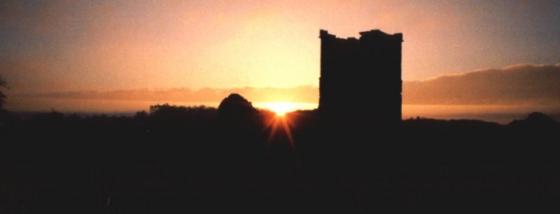Wor Barrow long stands near to the crest of Handley Down. It would have been truly impressive when it was built around 5000 years ago: the 45m long mound was 3m high and surrounded by a hefty 4m deep ditch. At the SE end three causeways interrupted the ditch. There was a causeway at the opposite end too. Pitt Rivers excavated the ditch and the mound in the 1890s. He found a couple of burials in the ditch, and six under the mound, in what was once a rectangular timber structure (a mortuary enclosure?), which had then been covered by a circular turf mound. He also found that people from the Romano-British era had reused the mound, as there were some later burials in the upper layers.
Perhaps bizarre to our thinking, P-R then decided that the best thing to do would be to terrace the earth from the SW side of the mound, and turn the place into a kind of stage to create ‘an amphitheatre for games or other amusements and exhibitions.’ Hey, just reuse of the site I guess. It should have a nice view after all. But it does sound like he more or less demolished the place. However, overall, the excavation was really the first ever ‘scientific’ barrow excavation and P-R used lots of new approaches – for example, the use of photos taken from a tower. He also pioneered experiments investigating the weathering of the exposed ditches. (In fact, anyone doubting that the man was a top chap should go to the Pitt-Rivers Museum in Oxford, where they will be delighted by his eclectic collection of assorted cultural ‘stuff’ from all over the world.)
There are two bowl barrows (probably with Neolithic origins) next to the Wor Barrow – this is interesting to have a number of Neolithic barrows in such proximity, and a large, later barrow cemetery nearby on Oakley Down.
(info from the EH SMR)
Ronald Hutton (in his 1991 ‘Pagan Religions of the Ancient British Isles’) mentions that one of the male skeletons found had an arrowhead embedded in his side. Which rather indicates that people could be just as nasty to each other in the Neolithic as they would ever be. Unless it was an accident, mate, I thought you were a wild boar.















































































